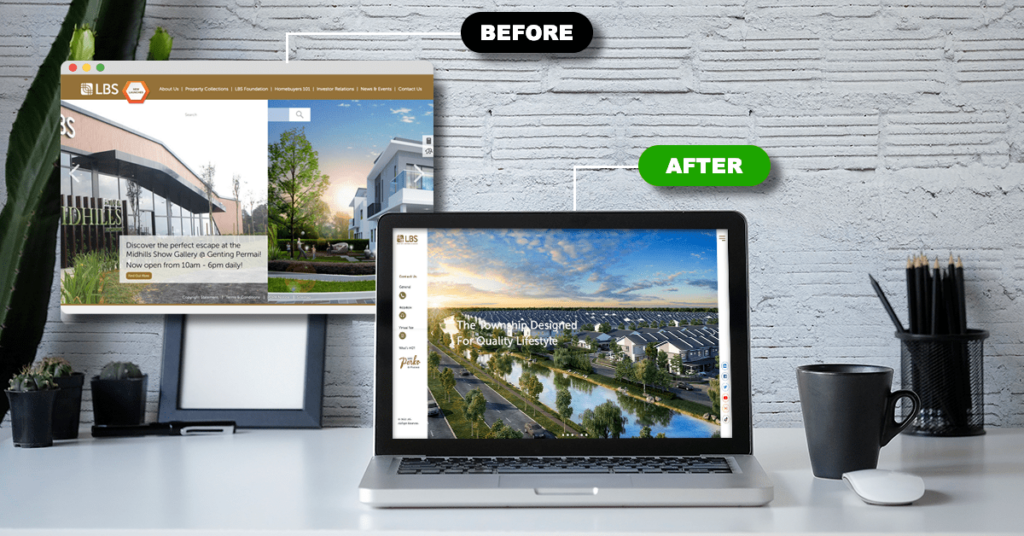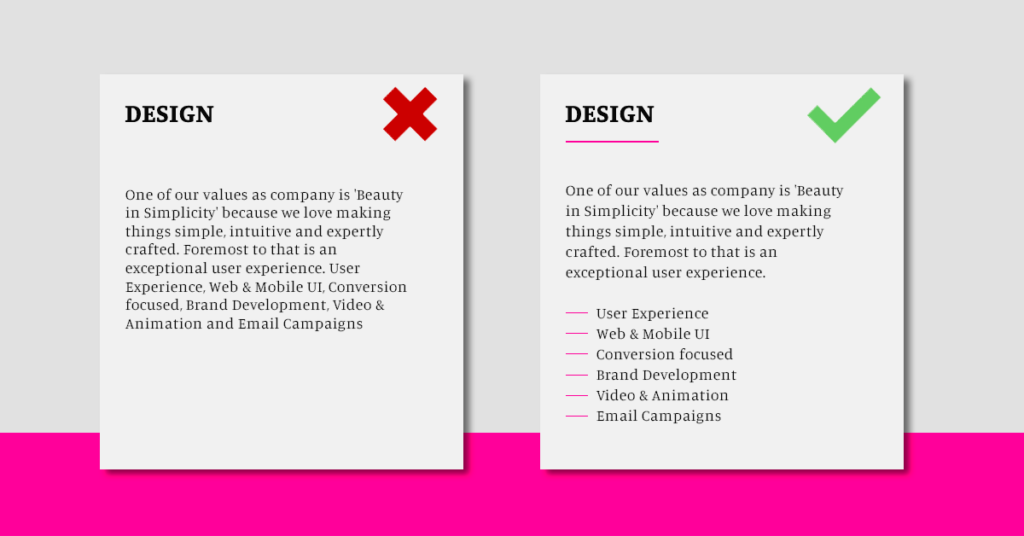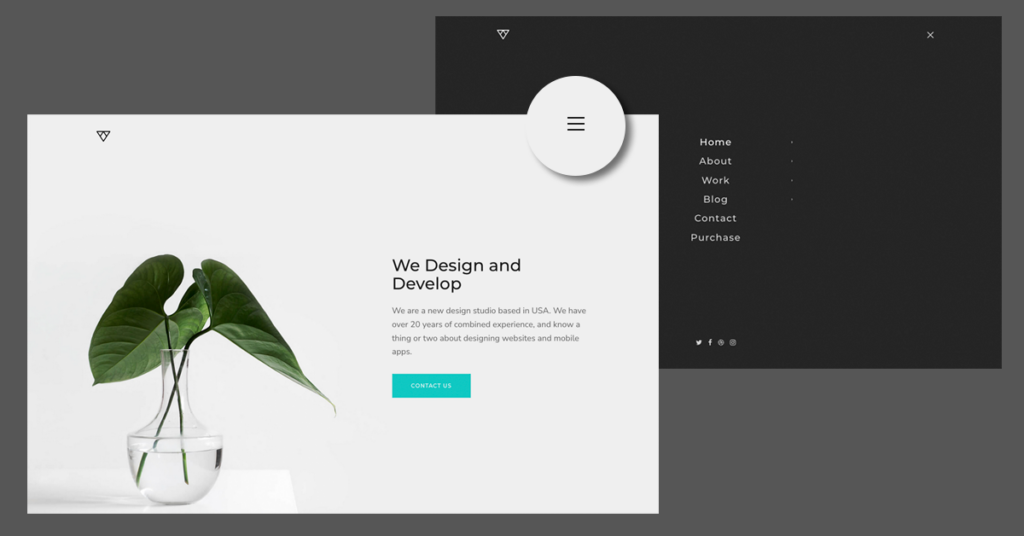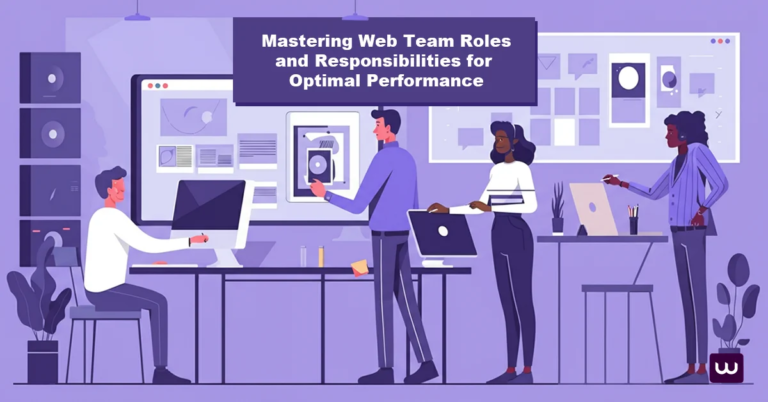
In the ever changing world of web design, its not just about looks but about website traffic and brand identity. As we head into 2025 we need to remember that the foundation of a great website is its design. From the best website design inspiration a well designed design not only captures your brand identity but also attracts and retains website traffic.
Knowing and avoiding web design mistakes is key to this, so your site resonates with users and your brand message is communicated. Avoiding these design mistakes is also important for your site’s credibility as outdated design and content can undermine trust and drive users away. Here are the mistakes to avoid:
Common Web Design Mistakes To Avoid
Common web design mistakes can damage a website’s user experience, engagement and conversions. A well designed website is essential for a business’s online success, it can increase credibility, trust and sales. But many websites fall victim to common design mistakes that harm their online presence. In this article we will go through the common web design mistakes and provide actionable tips to avoid them.
Severe Inaccessibility Risk in Web Design

Not having an accessible corporate website not only hampers its performance but also damages the user interface. Making the website accessible is crucial to make it usable for everyone especially for people with disabilities. This can be more critical when dealing with international clients who have different accessibility needs.
Moreover search engine algorithms are favouring accessible website designs so it’s important to have search engine friendly websites. Inaccessible websites are a major threat as they don’t accommodate users with disabilities like those who need keyboard navigation, alt text on images and sufficient colour contrast.
Usability testing is key to finding and fixing accessibility issues so teams can understand real user behaviour and improve overall user experience.
The consequences go beyond poor user experience and can affect search engine rankings and global client engagement. Accessibility and essential design elements is not just about compliance it’s about broad and effective reach in the digital world.
Don’t Let Slow Loading Speeds Kill Your Website

In the 2024 digital landscape where a web design company’s reputation is built on efficiency and user experience ignoring slow loading speeds can be fatal for your website. During development it’s important to prioritise speed to keep your audience engaged and reduce bounce rates especially for mobile users. This is not just about looks it’s a core functionality issue for web pages.
Causes of slow website performance are suboptimal web hosting, bloated code, large media files, and over reliance on heavy scripts and plugins. To mitigate these risks web design companies should choose hosting services that offer fast load times and big bandwidth.
During development speed tests should be a regular process. Tools like Google PageSpeed Insights will give you valuable insights on how your website performs under different conditions and will point out specific areas to improve.
And also optimising images and videos for the web without sacrificing the high quality images itself is part of this process. Implementing techniques like lazy loading which delays the loading of non-critical resources at page load time can also boost performance.
Web design companies should treat slow loading speeds as a major threat to website success. By focusing on efficient web hosting, streamlining the development process and monitoring website performance regularly you can ensure your site meets the high speed demands of modern web users. Failing to do so will not only frustrate your visitors but also hurt your own site’s search engine rankings and overall online presence.
Speed is key to user engagement. Optmise media files, use lazy loading and minimise heavy scripts. Tools like Google PageSpeed Insights can monitor your website’s speed.
Don’t Ruin Your Business Website with Non-Responsive Web Design for Mobile Users

Your website should adapt to different screen sizes to provide good user experience on all devices. Modern website design and responsive web design is key. In the ever changing landscape of web development projects the importance of responsive websites can’t be overstated.
For businesses not having a responsive design can be a costly mistake and can derail the effectiveness and reach of their website. As user behaviour shifts more towards mobile and multiple devices website designers must prioritise responsiveness in their designs to have a seamless user experience across all devices.
A non responsive web design is a major pitfall in modern web development and can cause a multitude of problems that can hurt a business website’s performance and user engagement. In a non responsive design images, text and navigation bars will maintain their absolute size and position regardless of the device being used.
This rigidity will result to a frustrating experience for users on mobile devices who will have to scroll horizontally or pinch to zoom on content and ultimately lead to higher bounce rates and lost opportunities.
For web designers the challenge is to create fluid and adaptable layouts that will respond to different screen sizes and resolutions of devices. This means a thoughtful approach to web development with flexible grids, scalable images and media queries that will adjust the layout based on the device’s capabilities and screen size.
By doing so responsive websites not only improve user experience but also benefits to the site’s SEO as search engines like Google favours mobile friendly sites in their algorithms.
Ignoring the need for responsive design in web development projects is a risk that businesses can’t afford. It’s not just about looks; it’s a part of the website’s functionality and its ability to serve its target audience. As the digital world evolves responsive web design has gone from nice to have to must have for any business website with seo.
Sacrificing User Experience For Looks, Especially For Mobile Devices
One of the most common web design mistakes is sacrificing user experience for looks. A website looks important but not at the expense of usability. A website that prioritises looks over function will result to a bad user experience and high bounce rates and low engagement. To avoid this mistake web designers should balance looks and usability so the website is both looks good and easy to use.
Don’t Ruin Your Site with Vague Calls-To-Action!

Web design mistakes can be traced back to unclear, non actionable CTAs which is needed to guide website visitors and convert them. In the competitive world of web development services especially in the busy digital landscape of Malaysia, creating high converting website is more than just good looks and smooth navigation.
A critical and often overlooked aspect is the effectiveness of your Calls-To-Action (CTAs). As a leading Malaysia website design company it’s important to avoid the mistake of generic CTAs that plague many developing websites.
CTAs that are unclear or lacks direction is a death sentence for conversions. They leave users confused, unsure of what to do next. To take your website from good to great it’s important to put explicit, action oriented language in your CTAs. This will guide users effectively and aligns with the dynamic goals of your web development services.
Whether you’re asking users to explore your portfolio, contact your team or learn more about your services, CTAs on landing pages should be crystal clear and compelling. By doing so you turn passive visitors into active participants a must have for any Malaysia website design company to create truly engaging and high converting websites.
Be Careful With Vague Messaging: A Web Design Mistake

Clearly communicate your unique value proposition to your audience. A good corporate website is important in web design as vague messaging can kill both personal and business websites.
When your website content doesn’t deliver valuable information or clearly communicates your branding strategy it leaves visitors confused about what your brand offers.
This lack of clarity is not just a minor mistake; it’s a critical flaw that can make potential customers leave your website and resulting to loss of engagement and opportunities. To avoid this crisis make sure your website communicates a clear and compelling message right from the start and showcase your brand’s unique value and purpose.
This is key to grab and retain user’s attention and turn your web design from a puzzle to a beacon of clarity and professionalism.
Don’t Get Caught in the Trap of Cluttered Interface: A Must Read for Web Designers Who Want an Engaging User Experience

Use white space for a cleaner and more organised layout which improves readability and usability. In the corporate web design world web designers face a big challenge when incorporating high quality visuals without cluttering the interface and avoiding common web design mistakes.
A cluttered interface is more than just a design mistake; it’s a critical error that can kill a corporate website. This mistake happens when designers try to show off their technical skills by packing too many elements in one webpage. The result is a visually overwhelming and disorganised layout that makes it hard for visitors to focus on the important parts of the site.
The key is to know the balance between high quality visuals and simplicity. Corporate websites requires a design that looks professional and brand identity while at the same time easy to navigate and accessible.
Web designers must use their technical skills wisely, make sure each visual element serves a purpose and contributes to the overall story of the site.
Using white space is a key strategy to achieve a clean and organised layout. It’s not just empty space, but a design element that helps to break up content and give the user’s eyes a rest. This way visitors can focus on the important elements like content, CTAs, custom graphics and branding messages.
By using white space and curating visual elements wisely web designers can create a corporate website that looks good and works well and communicates the message without overwhelming the audience.
Don’t Make Font Size Mistakes in Website Design

Make sure your font sizes are readable across devices to avoid a common design mistake. When designing a website web designers must pay attention to font sizes as they play a big role in the overall user experience, interface and mobile responsiveness. A good web design team is important to implement these elements well so the design is interactive and user friendly.
A common and serious design mistake is using font sizes that kills readability. If the text is too small, users especially on mobile devices will struggle to read without zooming in and that will result to a bad user experience and potential loss of engagement. If the text is too big it will disrupt the layout and users will have to scroll or zoom out to read the content.
To make sure your design looks good and works well web designers must optimize font sizes for different devices. On mobile screens font sizes should be between 12-16 points/pixels. For tablet screens 15-19 points/pixels and for desktops 16-20 points/pixels.
This way your website is mobile responsive and legible and user friendly across all devices. It’s not just about looks; it’s about creating an accessible and engaging interface for all users regardless of device. Neglecting this important aspect of web design will result to a bad user experience and will affect the effectiveness of your website.
Don’t Make Chunks of Text Overwhelm Your Website

Break text into shorter paragraphs and use bullet points for better readability to avoid a common website design mistake. In the fast paced world of website development web developers must be aware of the pitfall of overwhelming their audience with chunks of text. This common mistake can ruin even the best websites and turn them into a maze of words that repel rather than attract visitors.
To make your website content engaging and scannable web developers must be updated with the best practices of content presentation and modern web designs. Big blocks of text will overwhelm readers especially in this digital age where skimming is the norm.
This will not only hinder the effectiveness of your message but also the user experience and will drive visitors away.
The key is to break down content into smaller and manageable sections. Using bullet points, subheadings and enough spacing can turn dense text into a story. This will not only make it readable but also convey your message effectively and make your website content look and feel good.
Remember in website development the power of clear, concise and well structured content can’t be emphasized enough. By avoiding the trap of big text web developers can create awesome websites that attract and inform and make site visitors stay longer and absorb the message.
Keep your website content sharp, engaging and up to date and watch your website stand out in the ever changing digital landscape.
Don’t Ignore Your Target Market in Web Design and Digital Marketing

Know and understand your target market for better web design. In the fast paced world of web design and digital marketing overlooking the definition of your target market and keeping up with the latest web design trends is a deadly mistake that can kill your ecommerce website. Hiring a web design specialist can help you avoid these mistakes by making sure your website is designed for your audience and incorporates modern design and SEO best practices.
This mistake will not only affect website traffic but also your social media marketing efforts and will result to decline in engagement and conversion.
When you don’t know your target market your digital marketing services will miss the mark and won’t resonate with the users you want to attract. This misalignment will result to a gap between your ecommerce website’s offerings and the needs or interests of your potential customers.
For example a website designed with a youthful and vibrant look and complex navigation will alienate an older and more traditional audience that prefers simple and easy to navigate web experience.
To avoid this danger you must do thorough market research, analyze competitors and conduct customer surveys to get insights on the preferences, behaviors and expectations of your target market.
This will help you create user personas – detailed description of your ideal customers – that will guide the design and content of your ecommerce website to align with user expectations.
By knowing and catering to your target market you can optimize your website design and digital marketing strategies and increase website traffic and engagement.
This targeted approach will make every part of your ecommerce website from product displays to social media marketing campaigns tailored to the people who are most likely to convert and ultimately drive your ecommerce website and online business.
The Hidden Navigation Consequences

Make navigation elements visible and accessible. Overlooking the visibility of your navigation elements is a common web design mistake that will result to a bad user experience. A web design company must prioritize clear and intuitive navigation in their design services especially when dealing with complex content management systems. This is in line with the latest web design trend of having user friendly and engaging interfaces for corporate websites.
When users can’t find the navigation elements it not only hinders their ability to explore and engage with the site but also reflects poorly on the website’s overall usability and design.
To avoid this mistake web designers must make sure the main menu and other important navigation links are visible and accessible. This can be done by using sticky menus that will stay visible as users scroll or designing drop-down menus that are intuitive and responsive.
In content management systems where the content is vast and complex, navigation is even more critical. It will guide users through the different sections and categories of the website.
Also a web design company should consider the user journey in every part of their design process. This means anticipating the user’s needs and making sure all navigation elements are logically placed and consistently visible across different pages and devices.
The goal is to create a seamless and frustration free experience for the user which in turn can increase engagement, reduce bounce rates and potentially increase conversions.
In summary hidden navigation is a deadly mistake in web design and website development. Those who offer design services especially in content management systems must prioritize clear, visible and user friendly navigation. This will benefit the user experience and the website’s performance and the web design company’s reputation.
The Deadly Mistake of Ignoring Custom 404 Page Design in Your Web Development

Customize your 404 pages to maintain branding and possibly add some creativity. Overlooking the customization of your 404 page is a common web design mistake especially for a Malaysia web design agency or any website developer working on a web development project. One web design trend that emerged is the evolution of website footers which have gone from being minimalistic sections to vibrant areas that include elements found on the full homepage design. The default, templated 404 page is often considered a minor detail but it actually carries a lot of weight in the overall user experience and brand perception.
When a user lands on a 404 error it’s a moment of truth that can either build trust or push them away. As a web developer or a web design professional in Malaysia it’s your job to turn this point of frustration into an opportunity to engage. A custom 404 page that matches your overall web design and brand messaging can turn a lost visitor into a curious explorer.
In the competitive world of web development where every detail matters a custom 404 page not only shows your technical skills but also your commitment to overall user experience. It’s a proof of your expertise and attention to detail which is important in a web development project.
Not customizing your 404 page is not just a missed opportunity it’s a big mistake that can question your competence as a web developer. In the eyes of your audience and especially in the Malaysian web design market known for its high standards this oversight can be the difference between an amateur and a pro.
In summary as a web developer or a web design agency in Malaysia neglecting the design of your 404 page is not just a small mistake—it’s a big risk that can ruin the entire website development project.
Web Design Branding Inconsistencies Can Kill Your Online Reputation

Use a style guide to maintain uniformity in visual elements, tone and messaging across your website. Branding inconsistencies is a big threat to your online integrity and success. Stay updated with the latest web design trends as technology advances fast and website design changes. When working with a Malaysia web design agency for design services make sure to prioritize cohesive digital strategies that matches your brand. This is not just about looks it’s a necessity.
Branding inconsistencies across your website can ruin your digital strategies. When colour schemes, fonts, imagery and tone of voice change it confuses the visitor and dilutes your brand. These discrepancies creates a disjointed experience erodes trust and makes your brand less memorable or credible.
To fix this get the expertise of a professional Malaysia web design agency. These agencies can craft a comprehensive digital strategy that covers all aspects of design services. They will make sure every element from the homepage to the footer matches your website’s simplicity and brand identity for a smooth and engaging user experience.
Create a style guide. This should be the foundation of your digital strategy, governing the use of visual elements, tone and messaging across all pages and sections of your website. Regular audits are necessary to identify and fix deviations so you can maintain a consistent and strong brand presence.
Remember in the digital world your website is often the first point of contact with your potential customers. Any inconsistency in web design can be the difference between building a strong brand connection and losing a visitor to the competition. Prioritize branding consistency so your website matches the high quality imagery and professionalism of your business.
Trust Indicators and Social Proof
Trust indicators and social proof are part of a website’s design. Trust indicators like security badges and trust seals can establish credibility and trust with the website user. Social proof like customer testimonials and reviews can also build trust and increase conversions. But many websites fail to incorporate these elements properly and as a result lack of trust and credibility. To avoid this mistake web designers should put trust indicators and social proof front and center on the website so users can see and trust the brand.
Secure Site and Data Protection
A secure site and data protection is part of a website’s design. With cybercrime and data breaches on the rise website users are getting more concerned about their personal data. A website that doesn’t prioritize security and data protection can lose trust and credibility and result to low engagement and conversions. To avoid this mistake web designers should prioritize security and data protection so the website is secure, reliable and compliant to industry standards.
Ignoring Analytics and Data

Use Google Analytics to understand your website’s performance and make informed decisions. Ignoring the power of analytics can be a fatal mistake and result to digital darkness. Google Analytics is an essential tool that gives you deep insights that are crucial to fine tune your online presence. By looking at website design examples you can get inspiration and spot the standout features that improves user experience and visual appeal. In an era where data is king this oversight can prevent your website from attracting and retaining visitors and ultimately its success.
For web agencies and those who offer SEO services, analytics is non negotiable. By using the wealth of data from Google Analytics you can understand user behavior, preferences and patterns. This is crucial to optimize your website design, content and functionality to match user expectations and search engine requirements.
In the context of search engine optimization (SEO) analytics is a goldmine of information. From tracking user engagement metrics to understanding where your traffic is coming from Google Analytics gives you a clear view of how your SEO is performing. You can fine tune your tactics so your website not only ranks higher in search engine results but also gives user experience that converts visitors to loyal customers.
For any web agency or business that wants to be online, ignoring analytics is like sailing a ship without a compass. It’s a mistake that can result to lost opportunities, reduced visibility and ultimately a smaller online presence. By using the insights from tools like Google Analytics you can propel your website forward and make it thrive in the 2024 digital landscape.
Web Design Company for Flawless Design and Peak Performance

In conclusion, avoiding web design mistakes in 2024 is crucial to have a website that’s visually appealing and functional and user friendly. Hiring a web design specialist is important to avoid costly mistakes and make sure your website is up to date with modern design trends and SEO best practices. Focus on accessibility, loading speed, responsive design, clear calls-to-action, consistent branding, user experience details like navigation and content readability. Also use data analytics to inform design decisions and keep up with SEO best practices for online visibility and success.
Hiring a web design company can be a smart move to tackle these complexities. A team can fine tune your website (corporate site, personal blog or any other online platform) to meet these standards and make it top performing and stand out online. Their expertise will not only avoid common mistakes but also bring a level of expertise and creativity that can make a big impact to your website.




